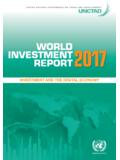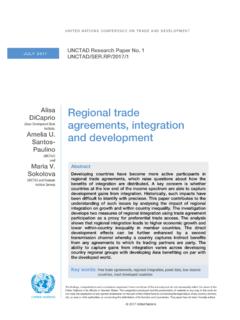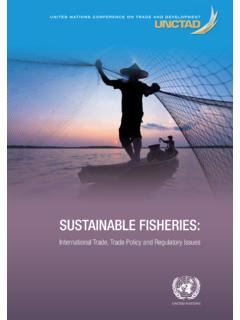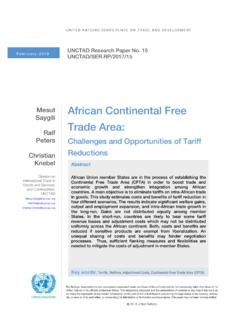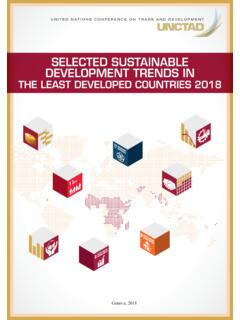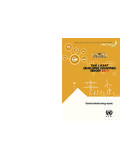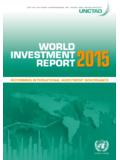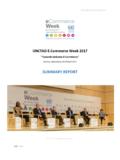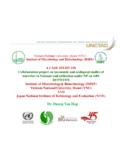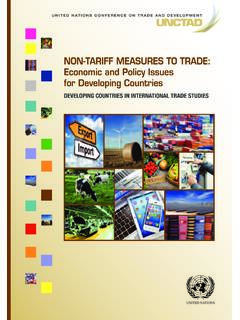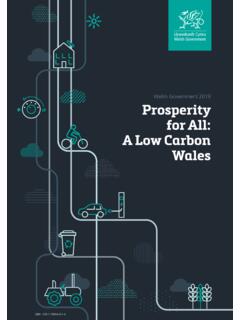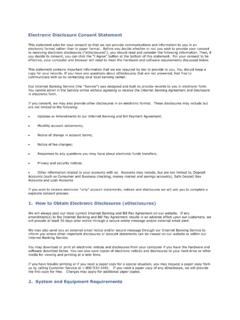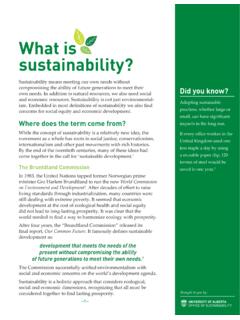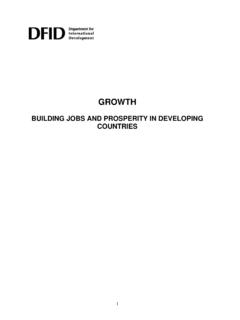Transcription of Trade and Development Report 2020
1 UNITED NATIONS CONFERENCE ON Trade AND DEVELOPMENTFROM GLOBAL PANDEMIC TO prosperity FOR ALL: AVOIDING ANOTHER LOST DECADETRADE AND Development Report 2020 UNITED NATIONSUNCTADTRADE AND Development Report 2020 UNITED NATIONS CONFERENCE ON Trade AND DEVELOPMENTTRADE AND DEVELOPMENTREPORT 2020 FROM GLOBAL PANDEMIC TO prosperity FOR ALL: AVOIDING ANOTHER LOST DECADER eport by the secretariat of theUnited Nations Conference on Trade and DevelopmentUNITED NATIONSG eneva, 2020 UNCTAD/TDR/2020 Sales No. ISBN: 978-92-1-112992-2eISBN: 978-92-1-005269-6 ISSN: 0255-4607eISSN: 2225-3262 2020, United Nations All rights reserved worldwideUnited Nations publication issued by the United Nations Conference on Trade and to reproduce excerpts or to photocopy should be addressed to the Copyright Clearance Center at other queries on rights and licences, including subsidiary rights, should be addressed to:United Nations Publications, 300 East 42nd Street, New York, New York 10017, United States of America Email: Website.
2 Designations employed and the presentation of material on any map in this work do not imply the expression of any opinion whatsoever on the part of the United Nations concerning the legal status of any country, territory, city or area or of its authorities, or concerning the delimitation of its frontiers or publication has been edited has served as a reminder that we live in a closely interdependent world that brings opportunities but also carries dangers. It has, just as importantly, shed light on a whole series of pre-existing conditions from heightened inequality, to unsustainable debt and rampant environmental destruction that were left unaddressed after the Global Financial Crisis.
3 The world at the end of 2019 was, in truth, a good deal more fragile than many were willing to acknowledge. As a result, Covid-19 obliges us to think carefully about what makes for healthy and resilient communities, at the global level as much as the local level and take to heart the lessons we have learned in the last year is shaping up to be a very difficult year for the global economy. With many countries unprepared to respond to a health pandemic, lockdown seemed to be the only plausible way to protect lives and preserve health systems. Doing so triggered an economic crisis that spread as quickly as the virus itself. Data for the first two quarters of this year show output contracted more sharply than in 2008-2009, and in some cases registering the steepest drop on record.
4 Estimates for the year point to a generalized global recession matching the Great Depression of the 1930s. Next year will likely see a rebound. However, it will be uneven within and across countries and uncertainty will persist. Unemployment will be on an upward trend, more and more companies will be facing the threat of bankruptcy; supply chains will be fragile; confidence will be shaken; demand will be weak. Debt levels across the world, in both the public and private sectors, will have risen significantly from the historically high levels registered before the crisis. In this condition, the wrong policy steps and ignoring the experience of the last decade could trigger further shocks which would not only derail recovery but could usher in a lost threats are greatest in the developing countries where the ability to respond to the crisis, on both the health and economic fronts, has been hampered by years of austerity combined with massive debt servicing, high levels of informality and policy space constricted by the rules we ve chosen to manage globalisation.
5 To date, the international community has not matched its expression of concern with commensurate support and action. Multilateralism was already under stress before the crisis, but Covid-19 has highlighted the need for frank discussion and bold proposals that match the ambition shown when the global system was year s Trade and Development Report argues that the global economic crisis caused by Covid-19 throws up a stark choice: continue misguided policy choices or collectively chart a new path that leads from recovery to a more resilient, more equal and more environmentally sustainable world in line with the ambition of the 2030 Agenda for Sustainable path is preordained. Building a better world is a matter of conviction and collective action.
6 The lives of future generations and of the planet itself will depend on the choices we all take over the coming KituyiSecretary-General of UNCTADivContentsForeword ..iiiExplanatory notes ..ixAbbreviations ..xOVERVIEW ..I XIITRADE AND Development Report 2020 FROM GLOBAL PANDEMIC TO prosperity FOR ALL: AVOIDING ANOTHER LOST DECADEC hapter ITRENDS AND CHALLENGES IN THE GLOBAL ECONOMY ..1A. Introduction ..1B. The world economy in 2021: Through a glass darkly ..1C. Mighty crises from little pathogens grow: The impact of the Covid-19 shock ..41. Private sector debt: Another crisis brewing? ..7D. Policy responses to Covid-19 ..12E. From disaster-relief to economic reconstruction.
7 15F. Trade in goods and services ..19G. Commodity prices ..21H. Capital flows and exchange rates ..241. Covid-19, defunct economists and changing mindsets ..26J. Regional trends ..28 Notes ..30 Chapter IIGLOBAL DEMAND AND GROWTH DILEMMAS AFTER COVID-19 ..35A. Introduction: a world economy unprepared for a major shock ..35B. The main sources of demand growth and their financial implications ..361. State-led demand and fiscal burdens revisited ..362. Growth of demand, private (dis-)savings and financial instability ..383. Net external demand is not a reliable global growth driver ..394. The configuration of global demand drivers in practice ..40C. The post-Covid-19 baseline: a lost decade.
8 431. The starting hypothesis: a shift to fiscal austerity ..432. The immediate implications of austerity: protracted unemployment and wage compression ..443. The macroeconomic outcomes of a protracted slowdown post-pandemic ..44D. A growth revival scenario to avert a lost decade: policies and outcomes ..481. The indispensable strong push for growth ..482. The environment matters for growth ..493. The other global common goods: Development and external financial balances ..514. Tuning the growth impulse and related financial and policy challenges ..52 Notes ..54 References ..55 Annex: Derivation of macro-accounting decomposition relations ..60 Chapter IIIRECOVERING BETTER: THE INEQUALITY CHALLENGE IN A FRACTURED ECONOMY.
9 63A. Introduction: What is happening to inequality during the pandemic? ..63B. Missing characters in the global inequality narrative ..64C. Global trends in the labour income share ..66D. Determinants of wage repression ..68E. Sectoral and composition effects on average productivity ..68F. Polarization ..72G. Income distribution after Covid-19: Prospects and policies ..75 Notes ..77 References ..77 Annex: Hunting for polarization ..82 Chapter IVRECOVERING BETTER: EXPANDING THE SPACE FOR FISCAL POLICY ..87A. Introduction ..87B. Debt dynamics after the global financial crisis ..89C. Sustaining fiscal expansion amid shocks ..92D. Progressive fiscal policy in advanced and developing economies.
10 95E. Fiscal policy and the balance-of-payments constraint ..98F. The international financial system and fiscal space after the pandemic ..1001. Expanding fiscal space through existing arrangements ..1012. Expanding fiscal space through international tax reforms ..104 Notes ..106 References ..107 Chapter VRECOVERING BETTER: RETHINKING MULTILATERALISM ..113A. Introduction ..113B. Multilateralism: A fractured history ..1151. The inter-war years: From reglobalization to building back better ..1172. The world turned upside down ..118C. The antinomies of hyperglobalization ..1191. Fragmenting supply chains ..1202. The endurance of rent-seeking ..1233. The mutation of financial globalization.
